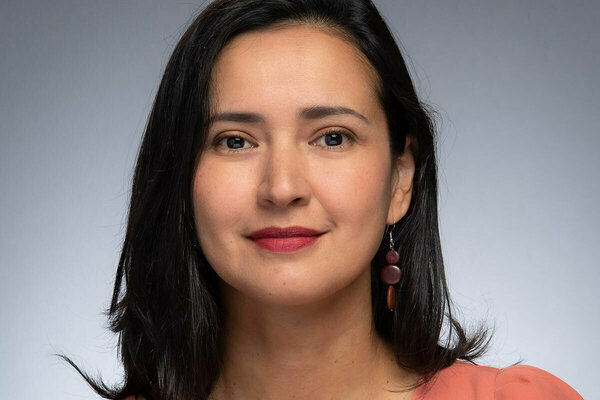
For generations, North Americans have seen media images of poverty, disease, civil war, and crime in Central America, including photographs and videos of Central Americans fleeing violence and of children, some just 2 or 3 years old, kept in cages at immigration detention camps.
Even when well-intentioned, the images can feed into negative stereotypes, said Tatiana Reinoza, an assistant professor in the Department of Art, Art History, and Design.
“I want to see other kinds of representation,” said Reinoza, who also is a faculty affiliate with the Institute for Latino Studies. “Everyone has family stories — everyone can relate to stories that our grandparents tell us. Every family has successes and tragedies.”
Reinoza has won a competitive Getty Scholar Grant that will support her effort to more fully represent the seven-country region, its people, and their stories with her book project, tentatively titled “Retorno: Art and Kinship in the making of a Central American Diaspora.”
Artists of Central American descent often travel from the United States back to their relatives’ homeland to capture family narratives. These stories, she said, have the power to counter the dominant portrayals of victimhood and violence in Central America, and to evoke empathy.
“Everyone has family stories — everyone can relate to stories that our grandparents tell us. Every family has successes and tragedies.”
Reinoza plans to reconstruct the artists’ family networks and explore the love, shame, curiosity, and resilience that compel them to return to find a piece of themselves in their homeland.
In September, she’ll begin a nine-month residency with nine other Getty Scholars at the Getty Center in Los Angeles, where there’s a sizable Central American population. Getty’s 2022 research theme is Art and Migration.
“The theme of migration has remained an inherent subject of art ever since some modern humans began to move across the planet, bringing their objects and technologies with them,” the Getty Center writes on its website. “In light of the many recent migration crises throughout the world, artists and scholars have responded to the critical movement of people and artifacts in myriad ways.”
Reinoza, who was born in El Salvador and moved to the U.S. as a young child, said migration in the Americas is more circular than many people think.
“It’s very personal. I’ve gone back and forth my whole life,” she said. “I’ve gotten to see wonderful parts — including religious traditions and Indigenous art — of Central America that don’t get talked about.”
Scholars will explore a number of questions, including those about “memory, destruction of cultural heritage, provenance and repatriation, as well as what happens when mobility is brought to a halt.”
Reinoza’s interest in her book topic began in 2014 during a surge of unaccompanied children along the southern border of the United States. That year, authorities apprehended more than 68,000 youth who crossed the U.S.-Mexico border by themselves. Once in custody, the children were placed in detention centers, a remarkable shift in policy, given the region’s former involvement in the Sanctuary Movement.
In her grant proposal, she wrote that despite being the third-largest Latinx group in the U.S., Central Americans are the most invisible with regard to academic discourse.
Elevating awareness of how kinship informs artistic production, she said, can help heal the image of a ravaged Central America by giving people “other ways of thinking that are about resilience not violence.”
Originally published by at al.nd.edu on August 30, 2022.